Anisotropic Heat Transfer in Plane of Carbon Fabrics Reinforced Geopolymer Composite
Abstract
:1. Introduction
1.1. Theoretical Prediction of Thermal Conductivity of a Composite
1.2. Physical and Thermal Properties of Carbon Fiber Reinforced Geopolymer Composite
2. Model Layout and Properties for Simulation
2.1. The Model for the Fiber Reinforced Geopolymer Composite
2.2. Carbon Fiber Reinforced Geopolymer Composite
2.3. Surface Feature Evolution of Matrix Geopolymer and Geopolymer Composite
3. Results and Discussion
3.1. Simulation Findings
3.2. Experimental Measurement of Thermal Conductivity of the Composite
3.2.1. Density and Thermal Measurement for the Carbon Fiber Reinforced Geopolymer Composite
3.2.2. Thermal Conductivity of the Carbon Fiber Reinforced Geopolymer Composite
4. Conclusions
Funding
Institutional Review Board Statement
Informed Consent Statement
Data Availability Statement
Acknowledgments
Conflicts of Interest
References
- Duxson, P.; Fernández-Jiménez, A.; Provis, J.L.; Lukey, G.C.; Palomo, A.; Van Deventer, J.S.J. Geopolymer technology: The current state of the art. J. Mater. Sci. 2007, 42, 2917. [Google Scholar] [CrossRef]
- El-Naggar, K.A.M.; Amin, S.K.; El-Sherbiny, S.A.; Abadir, M.F. Preparation of geopolymer insulating bricks from waste raw materials. Constr. Build. Mater. 2019, 222, 699. [Google Scholar] [CrossRef]
- Samal, S.; Phan Thanh, N.; Petríková, I.; Marvalová, B. Improved Mechanical Properties of Various Fabric-Reinforced Geocomposite at Elevated Temperature. JOM 2015, 67, 1478. [Google Scholar] [CrossRef]
- Le, V.S.; Nguyen, V.V.; Sharko, A.; Ercoli, R.; Nguyen, T.X.; Tran, D.H.; Łoś, P.; Buczkowska, K.E.; Mitura, S.; Špirek, T.; et al. Fire Resistance of Geopolymer Foams Layered on Polystyrene Boards. Polymers 2022, 14, 1945. [Google Scholar] [CrossRef]
- Samal, S.; Thanh, N.P.; Marvalova, B.; Petrikova, I. Thermal Characterization of Metakaolin-Based Geopolymer. JOM 2017, 69, 2480. [Google Scholar] [CrossRef]
- Samal, S.; Thanh, N.P.; Petríková, I.; Marvalová, B.; Vallons, K.A.M.; Lomo, S.V. Correlation of microstructure and mechanical properties of various fabric reinforced geopolymer composites after exposure to elevated temperature. Ceram. Int. 2015, 41, 12115. [Google Scholar] [CrossRef]
- Ercoli, R.; Laskowska, D.; Nguyen, V.V.; Le, V.S.; Louda, P.; Łoś, P.; Ciemnicka, J.; Prałat, K.; Renzulli, A.; Paris, E.; et al. Mechanical and Thermal Properties of Geopolymer Foams (GFs) Doped with By-Products of the Secondary Aluminum Industry. Polymers 2022, 14, 703. [Google Scholar] [CrossRef]
- Korniejenko, K.; Kejzlar, P.; Louda, P. The Influence of the Material Structure on the Mechanical Properties of Geopolymer Composites Reinforced with Short Fibers Obtained with Additive Technologies. Int. J. Mol. Sci. 2022, 23. [Google Scholar] [CrossRef]
- Cao, S.H.; Wu, Z.S.; Wang, X. Tensile properties of CFRP and hybrid FRP composites at elevated temperatures. J. Compos. Mater. 2009, 43, 315. [Google Scholar]
- Kalinowska-Wichrowska, K.; Pawluczuk, E.; Bołtryk, M.; Nietupski, A. Geopolymer Concrete with Lightweight Artificial Aggregates. Materials 2022, 15, 3012. [Google Scholar] [CrossRef]
- Rashedi, A.; Marzouki, R.; Raza, A.; Rawi, N.F.M.; Naveen, J. Mechanical, Fracture, and Microstructural Assessment of Carbon-Fiber-Reinforced Geopolymer Composites Containing Na2O. Polymers 2021, 13, 3852. [Google Scholar] [CrossRef]
- Łach, M.; Kluska, B.; Janus, D.; Kabat, D.; Pławecka, K.; Korniejenko, K.; Guigou, M.D.; Choińska, M. Effect of Fiber Reinforcement on the Compression and Flexural Strength of Fiber-Reinforced Geopolymers. Appl. Sci. 2021, 11, 10443. [Google Scholar] [CrossRef]
- Samal, S.; Marvalová, B.; Petríková, I.; Vallons, K.A.M.; Lomov, S.V.; Rahier, H. Impact and post impact behavior of fabric reinforced geopolymer composite. Constr. Build. Mater. 2016, 127, 111. [Google Scholar] [CrossRef]
- Luhar, S.; Nicolaides, D.; Luhar, I. Fire Resistance Behaviour of Geopolymer Concrete: An Overview. Buildings 2021, 11, 82. [Google Scholar] [CrossRef]
- Samal, S. Effect of high temperature on the microstructural evolution of fiber reinforced geopolymer composite. Heliyon 2019, 5, e01779. [Google Scholar] [CrossRef] [Green Version]
- Samal, S. Interface failure and delamination resistance of fiber-reinforced geopolymer composite by simulation and experimental method. Cem. Concr. Compos. 2022, 128, 104420. [Google Scholar] [CrossRef]
- R-Value for the Building Insulation Materials. Available online: http://www.archtoolbox.com/materials-systems/thermal-moisture-protection/rvalues.html (accessed on 30 May 2022).
- Chung, D.D.L. Materials for thermal conduction. Appl. Therm. Eng. 2001, 21, 1593. [Google Scholar] [CrossRef]
- Baillis, D.; Sacadura, J.F. Thermal radiation properties of dispersed media: Theoretical prediction and experimental characterization. J. Quant. Spectrosc. Radiat. Transf. 2000, 67, 327. [Google Scholar] [CrossRef]
- Cao, L.; Wang, J.; Liu, Y.; Zhang, Y.; Liu, B.; Cao, Y.; Zhang, Q. Effect of heat transfer channels on thermal conductivity of silicon carbide composites reinforced with pitch-based carbon fibers. J. Europ. Ceramc. Soc. 2022, 42, 420. [Google Scholar] [CrossRef]
- Chen, J.; Wang, Y.L.; Cheng, L.; Zhang, L. Thermal diffusivity of three-dimensional needled C/SiC–TaC composites. Ceram. Int. 2011, 37, 3095. [Google Scholar] [CrossRef]
- Bruls, R.J.; Hintzen, H.T.; Metselaar, R. A new estimation method for the intrinsic thermal conductivity of nonmetallic compounds. J. Eur. Ceram. Soc. 2005, 25, 767. [Google Scholar] [CrossRef]
- Berman, R. The thermal conductivity of dielectric solids at low temperatures. Adv. Phys. 1953, 2, 103. [Google Scholar] [CrossRef]
- Feng, Z.; Fan, Z.; Kong, Q.; Xiong, X.; Huang, B. Effect of high temperature treatment on the structure and thermal conductivity of 2D carbon/carbon composites with a high thermal conductivity. New Carbon Mater. 2014, 29, 357. [Google Scholar] [CrossRef]
- Macias, J.D.; Bante-Guerra, J.; Cervantes-Alvarez, F.; Rodrìguez-Gattorno, G.; Arés-Muzio, O.; Romero-Paredes, H.; Arancibia-Bulnes, C.A.; Ramos-Sánchez, V.; Villafán-Vidales, H.I.; Ordonez-Miranda, J.; et al. Thermal Characterization of Carbon Fiber-Reinforced Carbon Composites. Appl. Compos. Mater. 2019, 26, 321–337. [Google Scholar] [CrossRef]


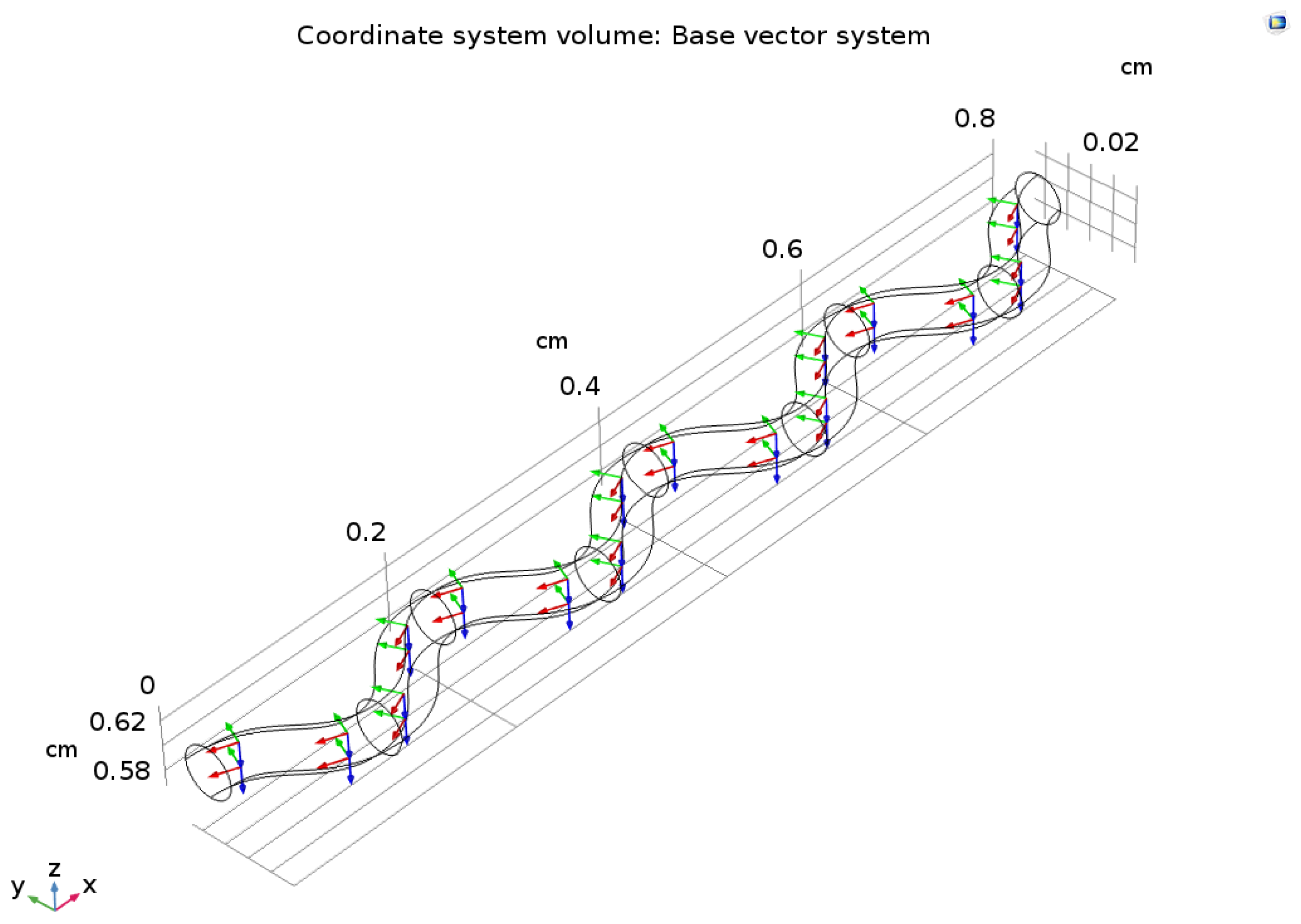
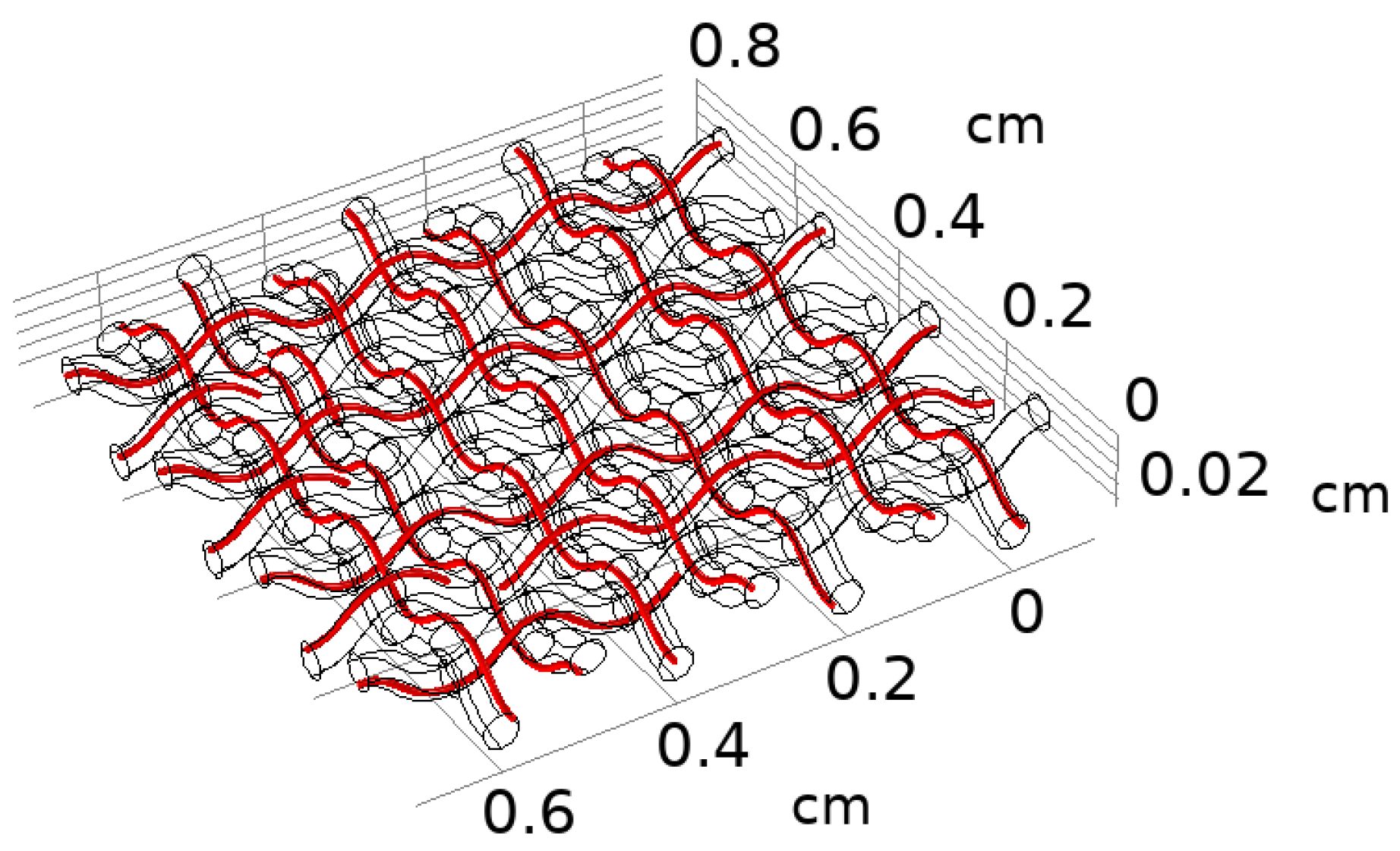
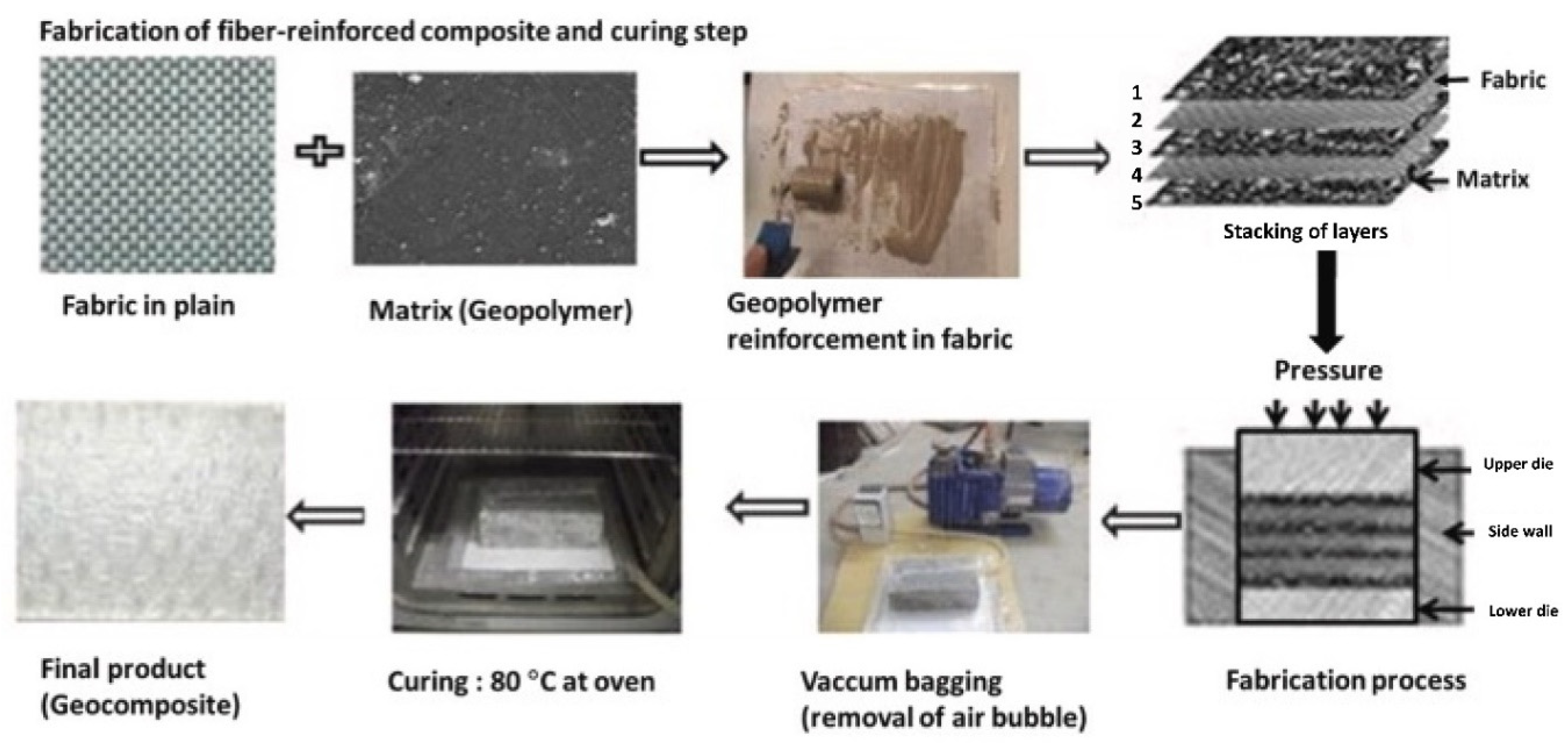
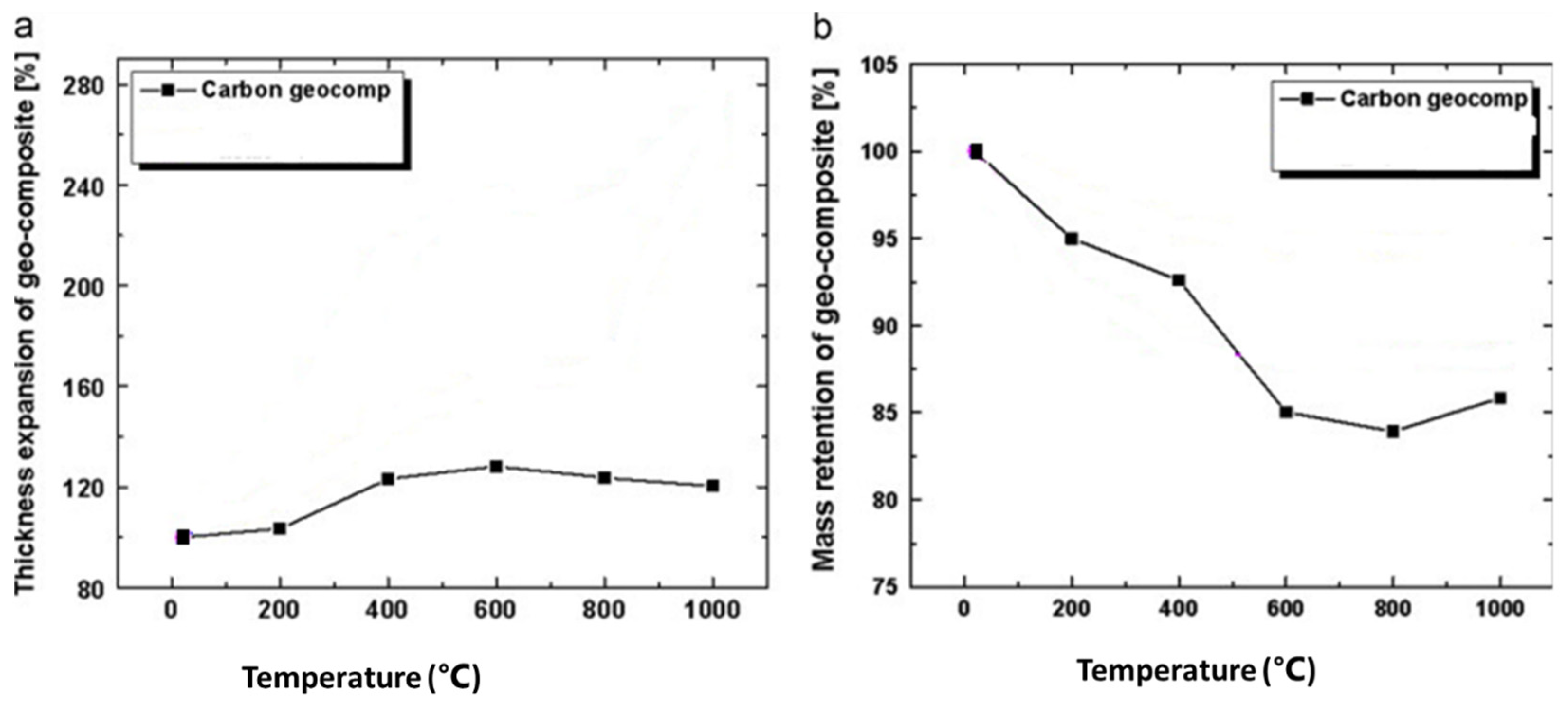

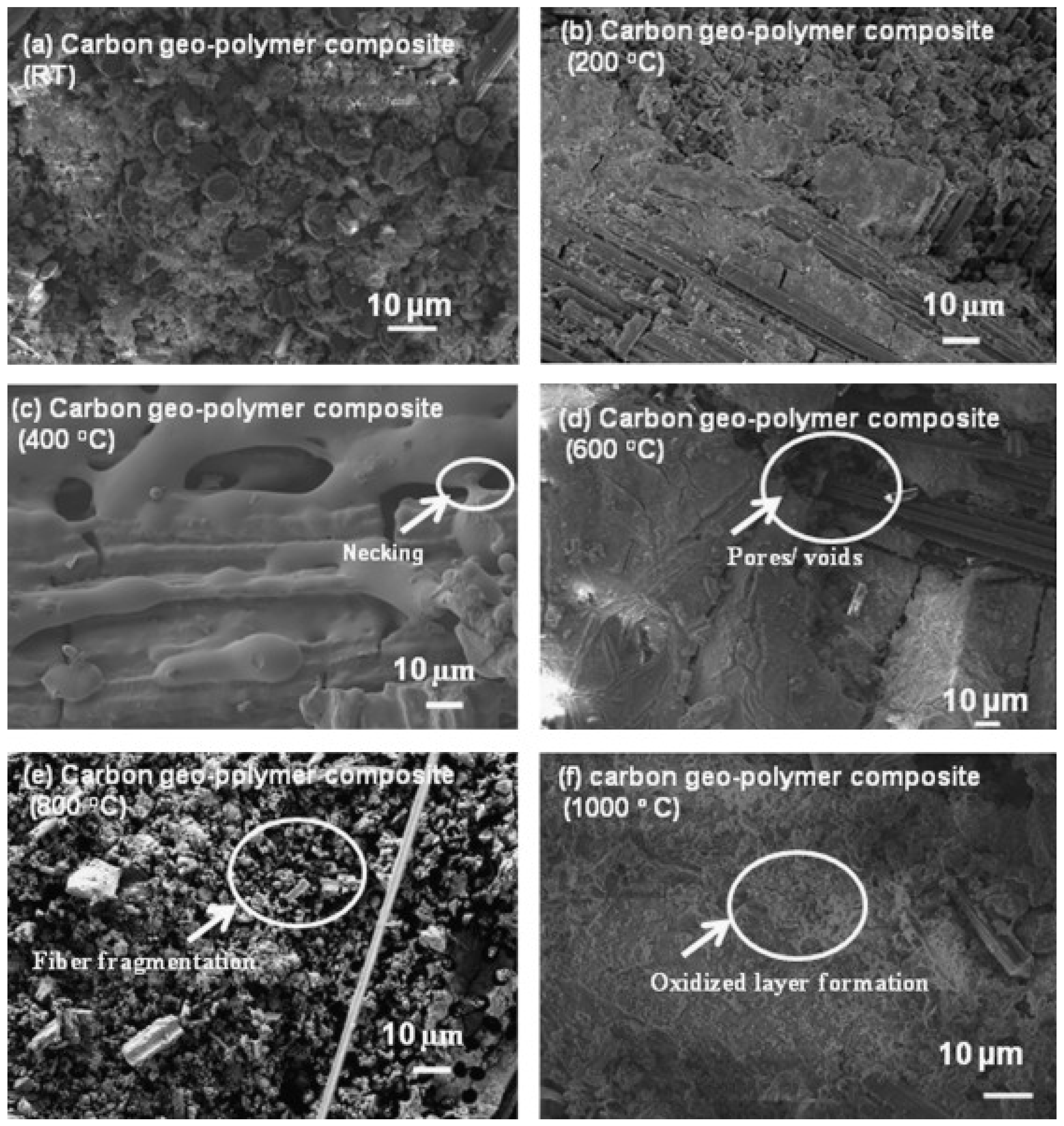

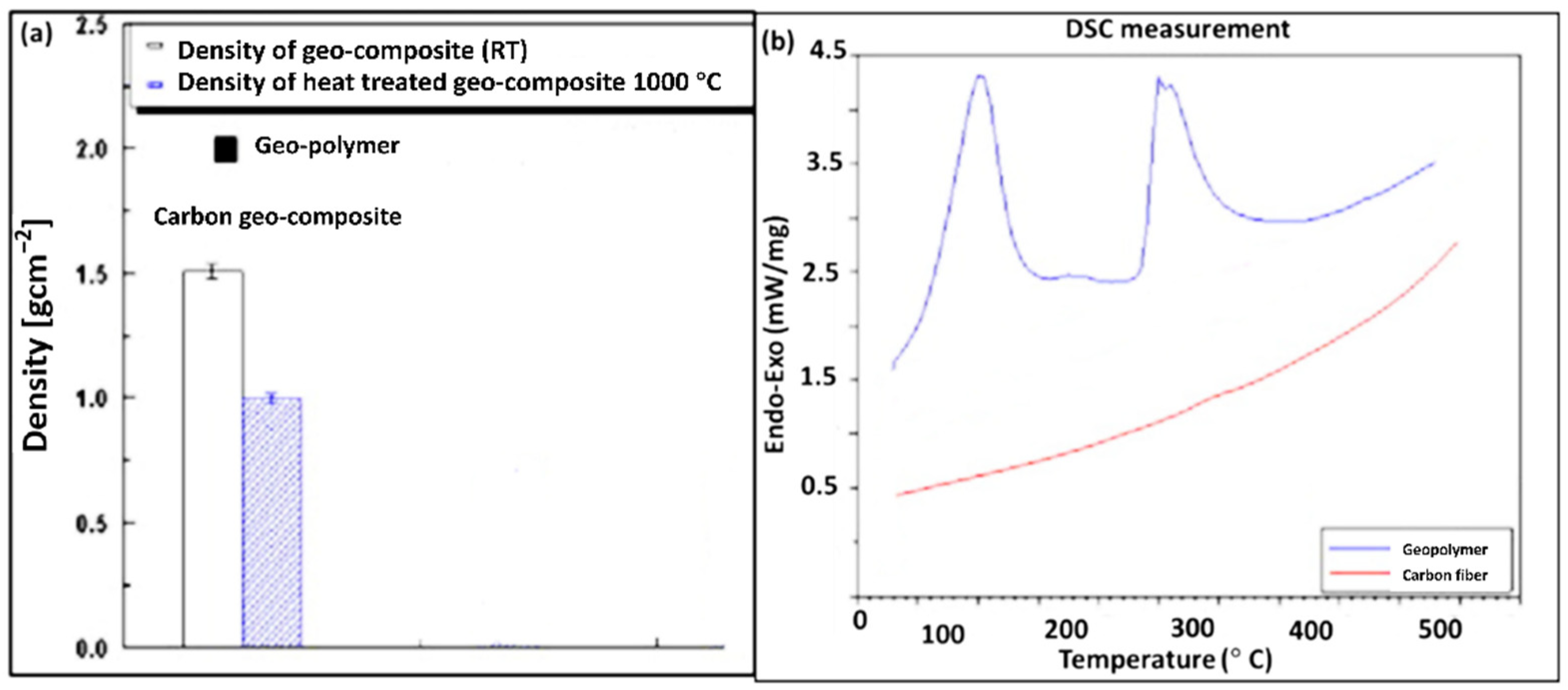

| Property | Geopolymer Ref [6] | Carbon Fiber (Core) Ref [6] | Carbon (Infinite Domain) |
|---|---|---|---|
| Thermal conductivity | 0.1141 W/(m K) | {60, 4, 4} W/(m K) | 60 W/(m K) |
| Density | 2000 kg/m3 | 1500 kg/m3 | 1500 kg/m3 |
| Heat capacity at constant pressure | 1650 J/(kg K) | 1000 J/(kg K) | 1000 J/(kg K) |
| Sample | Matrix (Polymer) Content (vol%) | Fiber Content (vol%) | Void Content (vol%) |
|---|---|---|---|
| Geopolymer matrix | 99.8 ± 0.02 | 0 | 0.2 ± 0.2 |
| Composite with carbon fiber reinforced geopolymer matrix | 40.5 ± 0.8 | 39.4 ± 0.5 | 21 ± 0.2 |
Publisher’s Note: MDPI stays neutral with regard to jurisdictional claims in published maps and institutional affiliations. |
© 2022 by the author. Licensee MDPI, Basel, Switzerland. This article is an open access article distributed under the terms and conditions of the Creative Commons Attribution (CC BY) license (https://creativecommons.org/licenses/by/4.0/).
Share and Cite
Samal, S. Anisotropic Heat Transfer in Plane of Carbon Fabrics Reinforced Geopolymer Composite. Appl. Sci. 2022, 12, 6624. https://doi.org/10.3390/app12136624
Samal S. Anisotropic Heat Transfer in Plane of Carbon Fabrics Reinforced Geopolymer Composite. Applied Sciences. 2022; 12(13):6624. https://doi.org/10.3390/app12136624
Chicago/Turabian StyleSamal, Sneha. 2022. "Anisotropic Heat Transfer in Plane of Carbon Fabrics Reinforced Geopolymer Composite" Applied Sciences 12, no. 13: 6624. https://doi.org/10.3390/app12136624






